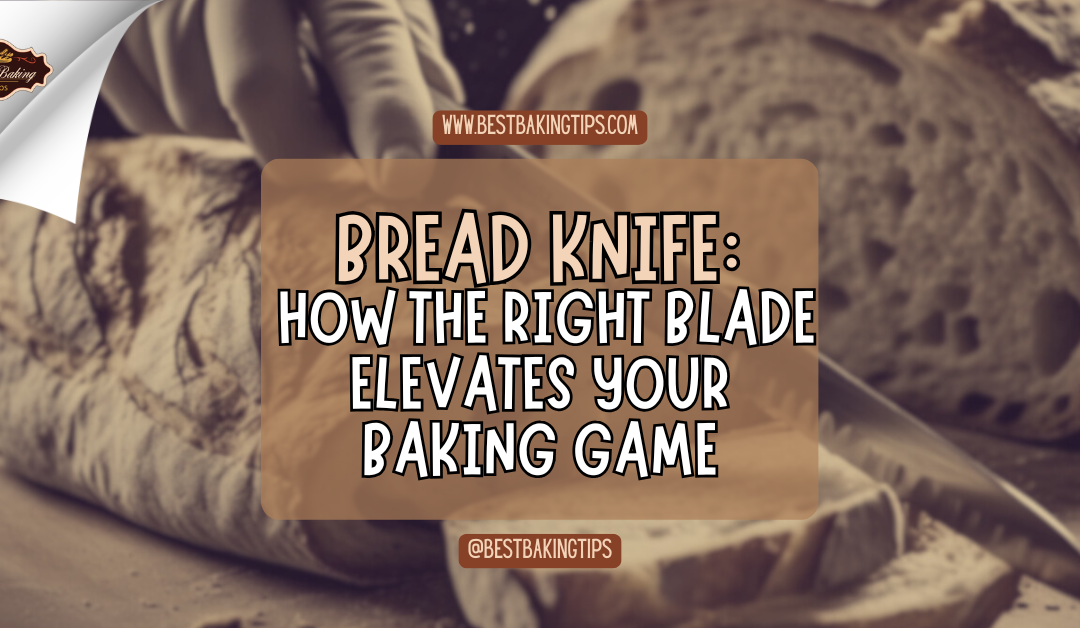==================
Affiliate Statement
Best Baking Tips is supported by our audience. When you purchase through one of our links, we may earn a small affiliate commission. As an Amazon Associate I earn from qualifying purchases. Your cost is not affected.
==================
Baking bread has become a rewarding and enjoyable experience for me, though I can’t quite recall exactly when I first started. What I do remember is how much I loved it from the start. However, rather than diving into it without much direction, I’m grateful that I took the time to study the basics first. Doing so has saved me from plenty of mishaps along the way. In this article, I’ll walk you through what I’ve learned about bread-making—from understanding essential ingredients to mastering key techniques. Whether you’re new to baking or looking to refine your skills, you’ll find tips and insights that will help you on your own baking journey.
Baking Bread: A Journey of Connection, Creativity, and Deliciousness
Home baking has seen a surge, with more people turning to their kitchens and ovens for an experience that’s rewarding, soothing, and downright delicious. Bread making is not just about creating something to eat—it’s a journey that connects you with the past, teaches patience, and sparks creativity.

Bread has been a cornerstone of human diet for centuries, playing a vital role in cultures worldwide. From fluffy baguettes in France to wholesome rye loaves in Scandinavia, each recipe tells a story. This guide will open the door to this fascinating world, steering you through the initial steps and equipping you with the insights to make your baking dreams come true.
Embarking on a bread-making adventure might seem daunting, but fear not—I’m here to simplify the process and bust some common myths. We’ll tackle everything from understanding the basics to mastering essential techniques. Whether you’re looking to whip up a classic loaf or experiment with more adventurous flavors, you’ll find the know-how to succeed.

Key Takeaways
- Understand the basics: Master the core ingredients (flour, yeast, salt) and tools to build a solid foundation for bread-making.
- Practice essential techniques: Focus on kneading, fermentation, shaping, and scoring to create well-structured, flavorful loaves.
- Experiment and troubleshoot: Explore different bread varieties, adjust for common mistakes, and tailor recipes to your taste and dietary needs.
Understanding Ingredients and Their Roles
Bread seems simple enough, right? Just some flour, water, yeast, and salt. But each of these plays a crucial part in your bread’s success story. Flour is the backbone, providing structure through gluten when mixed with water.
Not all flours are created equal. Bread flour, all-purpose, whole wheat—they all have distinct characteristics affecting texture and flavor. Higher protein content in bread flour makes it perfect for a sturdy, chewy loaf, while whole wheat flour brings a dense and wholesome flavor to the table.

Then, there’s yeast, the magic potion in bread-making. It not only helps the dough rise but also impacts taste and texture. Active dry or instant yeast? Each has its place, with instant being a bit easier for beginners since it doesn’t require proofing.
And let’s not overlook salt, the underrated hero. It enhances flavor and controls yeast activity, preventing your dough from going wild. These core components, used wisely, build the foundation for exceptional bread. With this understanding, you’re already halfway to crafting your first perfect loaf!
Essential Tools for Baking Bread
Diving into bread-making is made infinitely easier when you’ve got the right gear on hand. Think of these tools as your trusty sidekicks in crafting those perfect loaves.

Bread Baker’s Arsenal
Below is a helpful overview of the essential tools you’ll need for successful bread-making.
| Category | Tool | Description |
|---|---|---|
| Basic Tools | Mixing Bowl | Essential for combining ingredients. |
| Measuring Cups & Spoons | Necessary for accurate ingredient measurements. | |
| Kitchen Scale | Ensures precision by weighing ingredients, improving consistency in baking. | |
| Dough Handling | Dough Scraper | Helps with working with sticky dough and makes clean-up easy. |
| Non-Stick Kneading Surface | A generous non-stick surface, like a marble countertop or silicone mat, is essential for kneading. | |
| Baking Equipment | Oven | A good quality oven is crucial; it doesn’t need to be fancy, but it should allow control over temperature. |
| Bread Maker | Offers hands-off convenience for bread-making but lacks the control and rustic finish of a traditional oven. | |
| Baking Stone | Mimics a professional bread oven by providing a crusty bottom, ideal for rustic bread. | |
| Baking Sheets or Dutch Oven | If a baking stone isn’t available, baking sheets or a Dutch oven are good alternatives for baking. |
Lastly, keep your tools in good shape. A bit of effort here goes a long way, ensuring you’re always ready to bake another day. With your arsenal ready, the path to bread mastery is clear!
The Science Behind Dough: Kneading & Fermentation
Let’s break down two key steps in bread-making: kneading for structure and fermentation for flavor.

Kneading and Building Structure
Kneading dough might seem like just a hands-on workout, but it’s crucial for building the gluten network that gives bread its structure. As you knead, proteins in the flour bond to form gluten, creating that stretchy, elastic web that traps air for a perfect rise.
Fermentation and Crafting the Perfect Loaf
The magic happens when you let the dough rest and rise—a process known as fermentation. This is when yeast cells work their charm, converting sugars into carbon dioxide and alcohol, leading to that delightful airy texture and complex flavor profile.
Keeping an eye on fermentation time is key. Too little, and your bread might lack depth in taste and volume; too much, and you’re risking a sour, overblown dough. A warm, draft-free spot usually works best for an even rise.
It’s not just about following the clock, though. Getting to know your dough and adapting to its feel and look is part of the craft. Tackling these fundamentals ensures that every loaf you bake is a masterpiece in its own right!
This keeps it streamlined while still covering all the important aspects.
Bread Baking Techniques: Shaping, Scoring, and Baking
Once your dough has risen, it’s time to shape it into something beautiful and delicious. Shaping isn’t just about looks; it’s about structuring the dough so it holds up well and bakes evenly. Whether it’s a perfect loaf for a sandwich or a rustic artisan round, each shape serves its purpose.
Next up is scoring. It might just look like pretty art on bread, but scoring has a practical function. By slashing the dough right before baking, you control where the bread expands during its final rise. This prevents awkward, random splits and gives your bread that charming finished look.
The baking stage is where all your hard work pays off. Getting the oven temperature right is crucial; too hot and your crust forms too fast, too cool and your bread might turn out dense. A steamy oven at the start encourages a good rise and a crispy crust—simple tricks like placing a pan with water on the oven floor can do wonders.
Attention to these techniques transforms raw dough into a loaf bursting with flavor and character. Exploring and perfecting these skills enhances not only the bread-making process but also the quality of each loaf!
Exploring Bread Varieties for Every Palate
Have you ever wondered just how many different types of bread there are? From the classic white loaf to more adventurous options like sourdough and baguettes, there’s a whole world of bread varieties waiting to be explored. Let’s take a deep dive into the amazing range of textures, flavors, and possibilities each type has to offer!
Exploring the Bread Universe
There’s a whole world of bread varieties just waiting to be discovered, each with its unique texture and flavor profile. From the humble white loaf perfect for every meal to the heartier whole-grain options loaded with health benefits, there’s something for everyone.
Bread has endless possibilities, whether you’re looking for something simple, nutritious, or more indulgent. Whole-grain breads, for instance, are rich in fiber and nutrients, offering a healthier option without sacrificing flavor. They can be the foundation of a satisfying sandwich or serve as a hearty accompaniment to your favorite soup.
Common Bread Types and Their Characteristics
| Bread Type | Characteristics | Ideal Uses |
|---|---|---|
| White Loaf | Soft, light, and airy | Perfect for toast, sandwiches, or sides |
| Whole-Grain | Dense, hearty, and nutritious | Ideal for sandwiches, breakfast, or paired with soups |
| Sourdough | Tangy, chewy, and slightly sour | Excellent for artisan sandwiches or served with cheese |
| Baguette | Crispy crust, soft interior | Great for sandwiches or as a side with meals |
Sourdough, Baguettes, and Sweet Delights
Sourdough, with its tangy taste and rewarding process, stands in a league of its own. It’s all about nurturing your starter, which becomes a living extension of your kitchen, adding a personal touch to every loaf. The slow fermentation process enhances its flavor, making it a favorite among bread enthusiasts.
Feeling adventurous? Baguettes offer that crispy crust and soft interior, ideal for sandwiches or as a dinner side. Add herbs or spices to spice up your standard recipes, crafting aromatic loaves that elevate any dish.
For those with a sweet tooth, incorporating flavors like cinnamon and vanilla into your dough can transform your bread into a dessert-like delight. Experiment with ingredients like nuts, seeds, or even cheese for varied textures and tastes.
This variety in bread types means there’s never a dull moment in the kitchen, and each loaf is an opportunity to flex your creativity and expand your bread-making skills.
Troubleshooting Common Baking Mistakes
Bread baking can sometimes feel like solving a mystery when things don’t go quite right. Dense or heavy bread, for instance, is often a clue. It usually means the dough didn’t get enough rise time or the flour quality wasn’t up to snuff.
Bread too dry? Check for over-baking or too much flour. Even your kitchen’s humidity level can play a role. Adjusting your baking time or testing different flours can help achieve that ideal moist crumb.

Another hiccup is over-proofing, where the dough rises too much before baking, losing its structure. Keep a close eye on its progress during fermentation, using the fingertip test as your guide. A gentle push that springs back means you’re on track.
A pale crust or underbaked loaf often suggests the oven wasn’t hot enough, or the dough could benefit from more sugar in the mix to aid browning. Playing with your oven settings and trying a glaze before baking might do the trick.
Crust can be a biggie too—too thick or not enough crunch. Adjust your oven steam at the start of baking or why not try adding a cold water pan at the bottom of your oven? Each trial and error is just another step towards mastering that perfect loaf.
Healthy Baking: Nutrient-Rich and Diet-Conscious Options
If you’re looking to make your bread both tasty and nutritious, there are plenty of ways to pack in extra health benefits without sacrificing flavor. Let’s explore how swapping a few ingredients can take your loaves to the next level!
Boosting Nutrition in Every Loaf
Crafting bread that’s not only delicious but also packed with nutrients is a delightful challenge. Swapping in whole grains like spelt, rye, or oats can supercharge your bread with fiber and a hearty flavor profile.
Substituting white flour with whole wheat or using a blend gives your bread an earthy, rich taste and loads it with nutrition. It might make the bread denser, but the health payoff is worth it.
Tailoring Bread for Health and Special Diets
For those conscious about carbs, branching into low-carb flours such as almond or coconut can be an exciting venture. These need a slightly different handling technique but offer a unique result that’s perfect for gluten-free or keto-friendly diets.
Seeds like chia, flax, or sunflower don’t just add a satisfying crunch but also boost omega-3 and protein content. Incorporating these into your recipe is an easy win for flavor and health.
Tailoring bread to meet dietary restrictions doesn’t mean you have to sacrifice taste or texture. Experiment with different ingredients to create loaves that are both nourishing and scrumptious. Whether you’re adjusting for allergies or embracing a new lifestyle diet, homemade bread offers endless possibilities to eat well and enjoy each bite.
Baking Bread: Mastering the Journey

Thank you for reading through this guide on bread-making! We’ve covered the basics—from essential ingredients and tools to understanding dough and mastering baking techniques. I hope these tips have helped you feel more confident in the kitchen.
Remember, bread baking is more than just following a recipe; it’s about understanding the process and enjoying the journey. With every loaf, your skills and confidence will grow, and you’ll find endless opportunities to experiment and adjust to your taste. Whether it’s a simple loaf or a complex artisan creation, the possibilities are endless.
Keep exploring new recipes and techniques, and soon you’ll develop your own signature style. And don’t forget to share your bread with friends and family—it’s a joy to see others enjoy what you’ve made with your own hands.
Stay curious, keep practicing, and enjoy the process. Happy baking! Feel free to reach out with any questions or share your experiences.
FAQs
Below are some frequently asked questions to help guide you on your bread-making journey:
What are the essential ingredients needed for baking bread?
The key ingredients for making bread are flour, yeast, water, and salt. Flour provides structure through gluten, yeast helps the dough rise, water activates the yeast and forms the dough, and salt enhances flavor while controlling yeast activity.
What is the importance of kneading and fermentation in bread-making?
Kneading helps develop the gluten network, giving bread its structure and elasticity. Fermentation, which happens when the dough rises, is crucial for developing flavor and creating an airy texture. Both processes are essential to achieving the perfect loaf.
How can I troubleshoot common bread-baking mistakes like dense or dry loaves?
To fix dense bread, ensure the dough rises enough before baking. If your bread is dry, check for over-baking or too much flour. A pale crust could indicate the oven wasn’t hot enough. Adjusting baking time, moisture, and oven temperature can help you avoid these issues.
Join the Bread-Baking Community!
Discover everything you need for perfect vegan bread baking—from tips and recipes to a community that supports both beginners and experts. Stay connected and inspired!
- Visit our Official Website
- Follow us on Facebook
- Connect on Instagram
- Explore on Pinterest
- Join the conversation on Twitter (X)
- Watch on TikTok
Let’s bake something amazing together!





